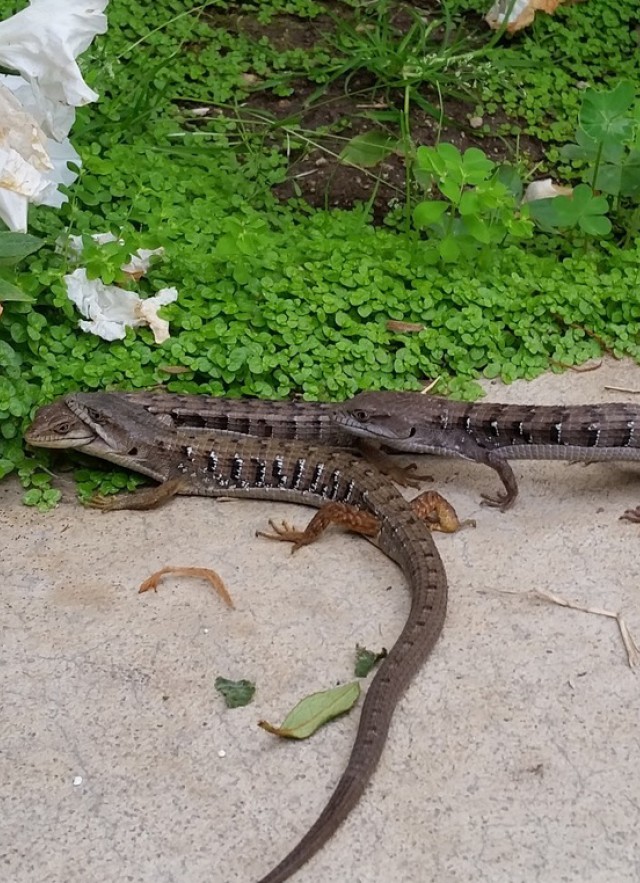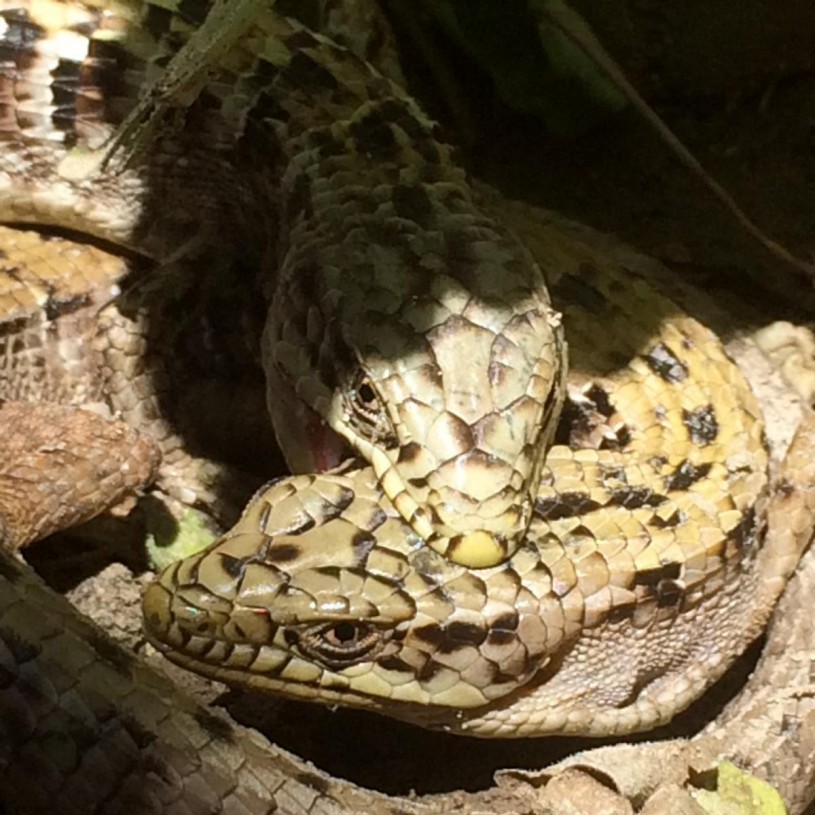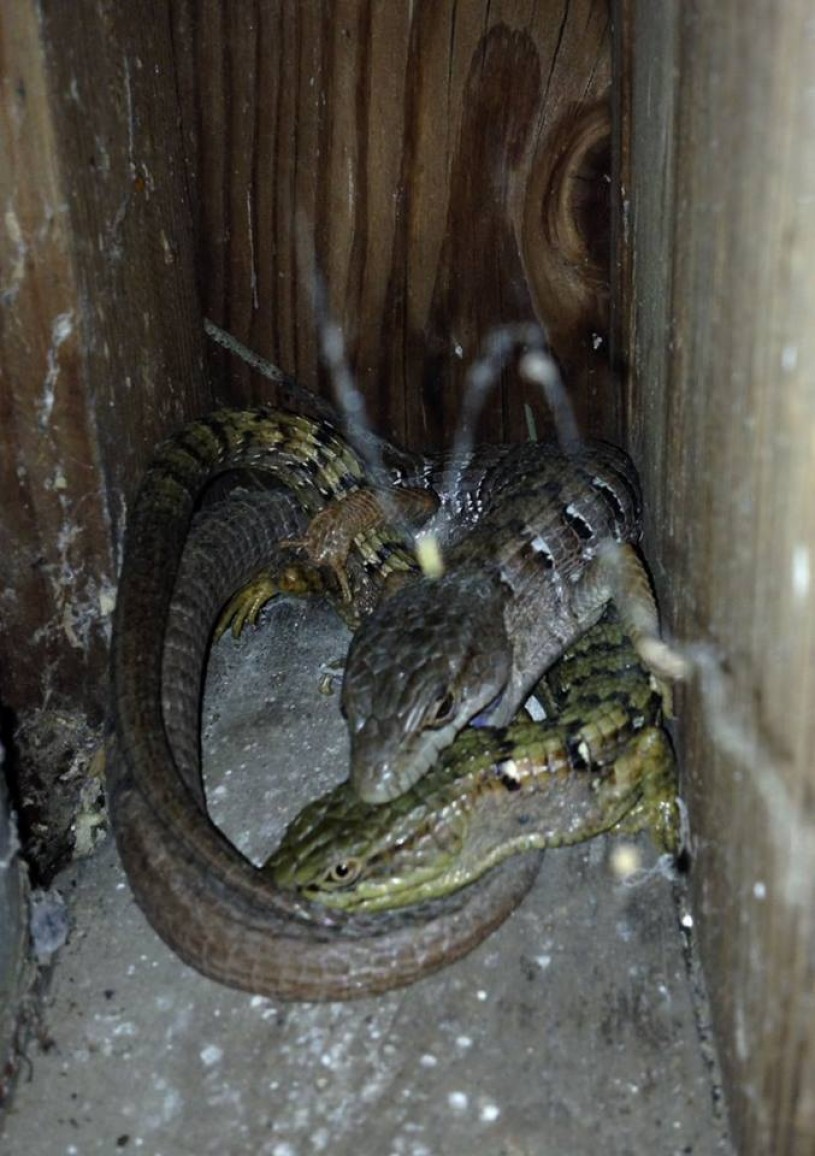The Hart Museum remains closed. Los Angeles County has approved a plan to transfer the William S. Hart Museum and Park from the County to the City of Santa Clarita.
Dear Los Angeles: We Need Your Photos of Alligator Lizard Sex!
Valentine’s Day is our annual reminder that we are entering alligator lizard mating season.

February 14, 2017
Happy Valentine’s Day! While February 14 might be the day you spend thinking about that special someone in your life, here at the museum, Valentine’s Day is our annual reminder that we are entering alligator lizard mating season. And, we need your help to study their breeding biology.
Alligator lizards are the most widespread lizard species in Southern California—your backyard, the landscaping around your apartment complex, you very likely have these lizards in the green spaces around your home. They don’t make it into our desert regions, but they can be found just about everywhere else including in the most urbanized parts of our cities. Nevertheless, these lizards don’t get seen all that frequently because they don’t bask in the sun like many other local lizards. Instead, alligator lizards prefer cooler, more hidden areas, hanging out in gardens, shrubs, and wood piles. Gardeners should be thankful because these lizards eat lots of pests like slugs and caterpillars as well as many other insects and spiders. In more natural habitats, they can be in grassland, chaparral, or forest and are especially fond of cooler, grassy areas along creeks.
Starting as early as February 9, alligator lizards in Southern California start mating. Many people who see their courtship behavior might think the lizards are fighting or that one is even cannibalizing the other, but in fact this is alligator lizard love. The male bites the female on her neck or head and then uses his tail to attempt to lift the female’s tail. The female may refuse these advances hoping instead a male more to her liking comes along and displaces the first male. As a result, the pair may stay in this position for more than a day. If the female does decide to mate, she lifts her tail allowing the male to insert his hemipenis into the female’s cloaca.
What’s a hemipenis? It’s the intromittent organ (an external organ specialized to deliver sperm while mating) in male lizards and snakes. In other words, it’s the lizard equivalent of the mammalian penis, except that lizards and snakes have two and can use the left or right hemipenis depending on which side is closest to the female. In some species, the hemipenes (this is the plural of hemipenis) are covered in barbs and spines, but in alligator lizards, the hemipenes are relatively smooth and lack these structures.

In 2015, I started using the Reptiles and Amphibians of Southern California (RASCals) project to study the breeding behavior of these lizards. One of the main questions is to understand whether urban and rural lizards breed at the same time. Urban areas tend to heat up more than surrounding rural areas; this is termed the urban heat island effect. If the lizards are using temperature as a cue for when to mate, we might then expect that urban lizards breed earlier.
The challenge with studying the breeding biology of these lizards is that it would be very difficult to get a large number of observations across different habitat types. However, we can solve this problem by crowdsourcing; we can ask thousands of people to keep an eye out and document any breeding observations by sending us photos.

Local community scientists documented 19 cases of breeding behavior in 2015 and 20 in 2016. We have also received a number of photos from earlier years, all the way back to 2008. Based on these observations, breeding in coastal areas of Southern California can be as early as February 9, or as late as April 30, but the peak of breeding tends to be mid-March through mid-April. We are already seeing some interesting patterns. In 2015, 13 of the 19 observations occurred in a single peak of activity between March 17 and April 1. In 2016, we saw two peaks of activity—breeding activity increased in mid-March but then ceased as a series of cold fronts in late March and early April passed through Southern California. We then had a second peak of activity in mid-April with the return of warmer temperatures and sunny skies.
What will the breeding season be like in 2017? We should know the answer soon, but only with the help of community scientists like you! HERE IS WHERE WE NEED YOUR HELP. If you see courting or mating alligator lizards, please take a photo and submit it to the RASCals project. You can do this through iNaturalist, or by emailing the photo to rascals@nhm.org, or by using #NatureinLA on social media (Facebook, Twitter, Instagram), or by texting us your photos at (213) 663-6632. If you have photos from previous years, please submit those as well. And while you are searching for those amorous alligator lizards, we encourage you to send in photos of any other reptiles and amphibians you come across.
(Oh and don't forget about snails and slugs too for our #Snailblitz photo contest).

All photos for this blog were taken during the 2016 breeding season and submitted by community scientists to the RASCals project.